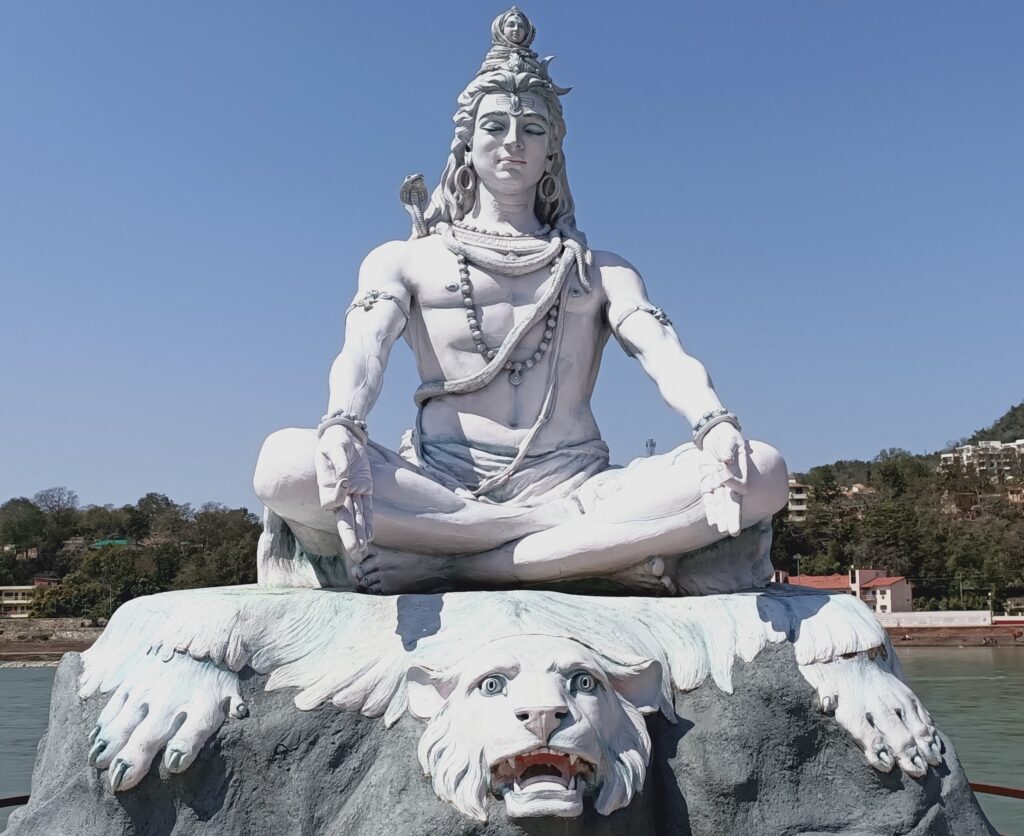The word “Yoga” is derived from the ancient language Sanskrit and means ‘to join’ or ‘unite’. As per yogic scriptures, the practice of Yoga leads to the union of Universal Consciousness, indicating a perfect harmony between the mind and body.
Yoga is a group of physical poses (asanas), Manas Shanti (mental peace), spiritual practices, Shisthu (discipline), which originated in Bharatha (ancient India), more precisely during the Indus-Sarasvati civilization in India over 5,000 years ago. Some researchers think that yoga may be up to 10,000 years old, from the very dawn of civilization. It is one of the six Astika schools of Hindu philosophical traditions and it is mentioned in the ancient Vedic texts. The word yoga was first mentioned in the oldest sacred Rigveda and also in the Upanishads. The Upanishads took the idea of ritual sacrifice from the Vedas and internalized it, teaching the sacrifice of the ego through self-knowledge, action (karma yoga), and wisdom (jnana yoga). In the yogic lore, Shiva is seen as the first yogi or Adiyogi, and the first Guru or Adi Guru”.

The term Yoga in the Western world often denotes a modern form of ‘hatha yoga’ and as exercise consisting of the postures or asanas. The Sutras of Patanjali started from the 2nd century BC, and gained prominence in the western countries in the 20th century after first being introduced by Swami Vivekananda.
As you can imagine, from ancient times to modern day, yoga has changed. Originating in India, the practice of yoga spread all over the world until arriving in the West. Thus, it has been enriched by new cultures which have allowed it to take on different forms. If you are already taking yoga classes, you probably know at least one of these. How has yoga become what it is today and how has it evolved over the centuries? The BBC article, “Yoga, How did it conquer the world and what’s changed?”(2017), reminds us that Swami Vivekananda’s book, Raja Yoga, which he wrote in New York City in 1896, had a major impact on Western understanding of what Yoga is. It also states that “later, in the 1960s, travellers on the hippie trail ended up in Indian ashrams, and images of The Beatles visiting the Maharishi Mahesh Yogi in Rishikesh in 1968 drew greater international attention towards Indian spiritualism and, of course, yoga.”
Swami Vivekananda proclaimed “Each soul is potentially Divine”. The goal is to manifest this Divinity within, by controlling Nature-external and internal. Do it either by work or worship, psychic control or philosophy: by one, or more, or all of these and be free. The systematic methodology of unfoldment of this inner potential Divinity, by moving towards Self-perfection is referred to as Yoga by Sri Aurobindo (1872-1950), an Indian philosopher, yogi, guru, poet, and nationalist. Yoga is thus a process by which the Animal-man ascends through the stages Man-man, Super-man and the Divine-man. In this process, the limited, narrow, selfish thinking completely changes and takes the shape of an integrated, all-encompassing selfless character expressed by equanimity. This state of Divinity or Self-perfection is the state of pure conscience, maximum creativity and bliss.
Hence the movement towards this divinity through Yoga is a delightful, blissful process. And, since every individual or society is always striving to achieve greater happiness, bliss, creativity, and higher mental faculties, Yoga clearly is the real solution, both for individual fulfillment and social harmony. Divergent is the method of Yoga. Unless one sees the underlying unity and harmony, one is apt to lose track amidst diversities. Once the insight into the Unity in Diversity develops, the truth about the comprehensive nature of Yoga emerges. This central note of harmony was emphatically sounded in the speeches of Swami Vivekananda.
Upanishads
The first known appearance of the word “yoga”, with the same meaning as the modern term, is in the Katha Upanishad, which integrates the monism of early Upanishads with concepts of ‘Samkhya’ (is one of the six Astika schools of Hindu philosophy. It is most related to the Hinduism school of Yoga) and yoga. It defines various levels of existence according to their proximity to the innermost being ‘Atman’. Yoga is therefore seen as a process of interiorization or ascent of consciousness. It is the earliest literary work that highlights the fundamentals of yoga.
Mahabharata and Bhagavad Gita
Description of an early form of yoga called ‘nirodhayoga’ (yoga of cessation, it also means ‘inhibited’ or ‘restrained’.) is contained in the Moksha dharma section of the 12th chapter (Shanti Parva) of the Mahabharata.
Nirodhayoga emphasizes progressive withdrawal from the contents of empirical consciousness such as thoughts, sensations, etc. until Purusha (Self) is realized.
Terms like vichara (subtle reflection), Viveka (discrimination), and others which are similar to Patanjali’s terminology is mentioned, but not described. There is no uniform goal of yoga mentioned in the Mahabharata. Separation of self from matter, perceiving Brahman everywhere, entering into Brahman, etc. are all described as goals of yoga. Samkhya and yoga are conflated together and some verses describe them as being identical. Moksha dharma also describes an early practice of elemental meditation. Mahabharata defines the purpose of yoga as the experience of uniting the individual atman with the universal Brahman that pervades all things.
The Bhagavad Gita (‘Song of the Lord Krishna’) is part of the Mahabharata and also contains extensive teachings on Yoga.
The Gita consists of 18 chapters and 700 shlokas, with each chapter named as a different yoga, thus delineating eighteen different yogas.
In addition to an entire chapter (Ch-6) dedicated to traditional yoga practice, including meditation, it introduces three prominent types of yoga:
· Karma yoga: yoga of action.
· Bhakti yoga: yoga of devotion.
· Jnana yoga: yoga of knowledge.